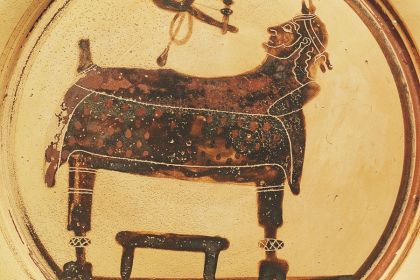SONGWRITER
Bamboléo: song meaning and origin of the lyrics

Gipsy Kings CD cover
Bamboléo, released by the French band Gipsy Kings in the 1980s, remains the defining genre entry of its era. The band's guitar-oriented output is infused with flamenco motifs, and their Spanish lyrics reflect the roots of their Spanish Romani families who emigrated to France during the Spanish Civil War.
Like many Latin pop songs, the lyrics of Bamboléo (meaning wobble or sway) are not encumbered with particularly deep meaning, mainly addressing the loss of a lover through a series of obscure metaphors and fragmented laments. In the chorus, the lyrics attempt to view this loss in a more positive light: "Bamboleo, bambolea/Porque mi vida, yo la prefiero vivir asi" which can be translated as "Bamboleo, bambolea/Because I choose to live like this." The predominance of minor harmonies, however, downplays this faux-optimism by imbuing the chorus with melancholic undertones.
In fact, Gipsy Kings would have likely borrowed the melodic idea of the Bamboléo chorus from the song of the same name by the popular Brazilian songwriter André Filho. You can clearly compare the similarities between this version and the 1937 Bamboléo recording cut by Brazilian samba singer Carmen Miranda.
Listen to Bamboleo by Carmen Miranda:
In addition, Gipsy Kings' Bamboleo lyrics draw some parallels with the 1980 song Caballo Viejo composed by the famous Venezuelan songwriter Simón Díaz. The lyrics of both tracks do indeed open with very similar lines, but neither the melody nor musical harmony has anything in common.
Watch Bamboleo (official video) by Gipsy Kings:
Compositionally, Bamboleo follows the classical tonal theory, combining the Aeolian mode with the harmonic minor scale—a common technique seen in many Latin pop hits. In the harmonic analysis of the song's chord chains, the scale degrees (denoted with Roman numerals) show the following progressions in the key of F sharp minor:
- F♯m–C♯7–F♯m or i–V7–i for verses;
- F♯m–Bm–C♯7–F♯m or i–iv–V7–i for choruses;
- Bm7–E7–Amaj7–D–Bm–C♯7–F♯m or iv7–V7/VII→VIImaj7–III–iv–V7–i for bridges.
Notice how the harmony gets more complex as the song unfolds. The verses are based on the C♯7–F♯m two-chord alternation known as an authentic cadence, and in the chorus, this progression is expanded with the Bm subdominant chord to form the iv–V7–i cadence which is often found in the closing sections of classical works. Here the C♯7 major dominant chord rooted in the fifth scale degree is marked in red as it does not belong to the Aeolian mode but is a representation of the harmonic minor scale. This technique is used extensively by songwriters to refine the authentic cadence.
The song harmony undergoes further changes in the bridges, where the classical technique of tonicization is observed. In this case, we have a rare example of tonicization of the seventh scale degree—the temporal shift of the tonal center to the A major implemented by the E7 secondary seventh chord, sometimes referred to as the secondary dominant. This technique is often found in classical music but rarely used by pop songwriters, who usually strive to simplify song harmonies as much as possible. This song section contains four major chords and introduces a clear major mood to the overall minor narrative.
In the video, you can find guitarists using a capo mounted on the second fret, which greatly facilitates guitar fingering when performing works in the key of F sharp minor and F sharp major.
Discover more songs composed in Aeolian minor mode and check out their harmonic analysis in the following articles:
- 8 songs to introduce Aeolian mode and natural minor scale
- 6 songs combining harmonic minor and Aeolian mode
- Mariposa Traicionera: meaning and flamenco roots of Maná's top hit
- Livin' la Vida Loca: why is Ricky Martin's best song so catchy?
- A Dios le Pido: Juanes' Spanish lyrics behind the song success
- Suavemente: meaning of Elvis Crespo's best song
- El Farsante and 7 more songs by Ozuna in Dorian and Aeolian modes
- La Gota Fría: vallenato music masterpiece refashioned by Carlos Vives
- Vivir Mi Vida: meaning and origin of Marc Anthony's jubilant salsa



